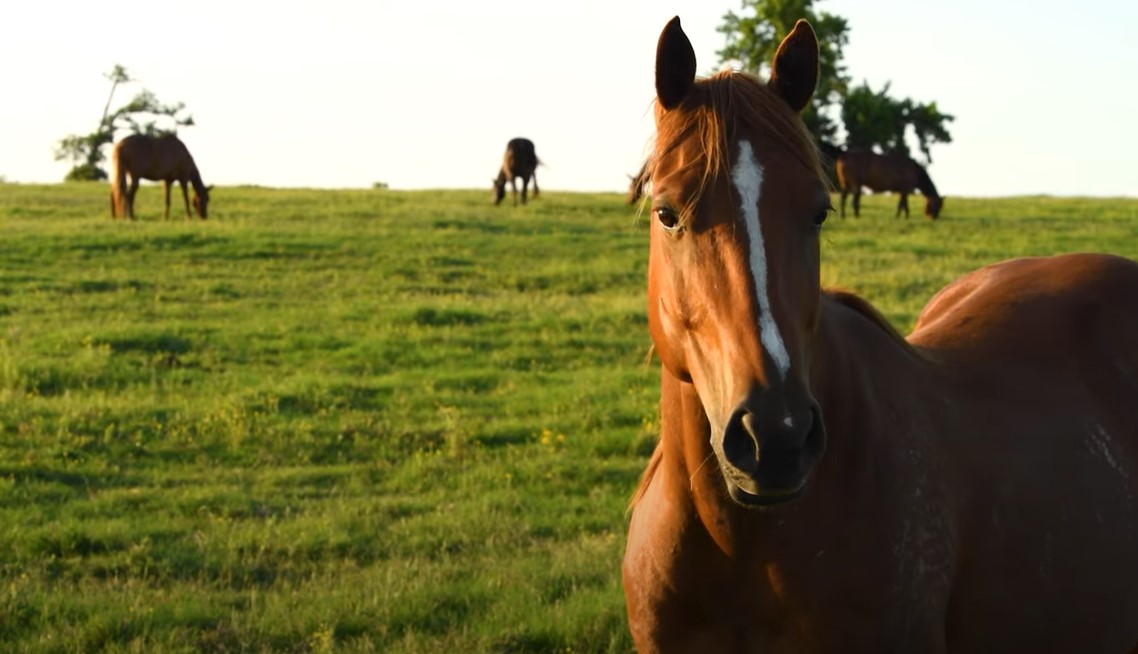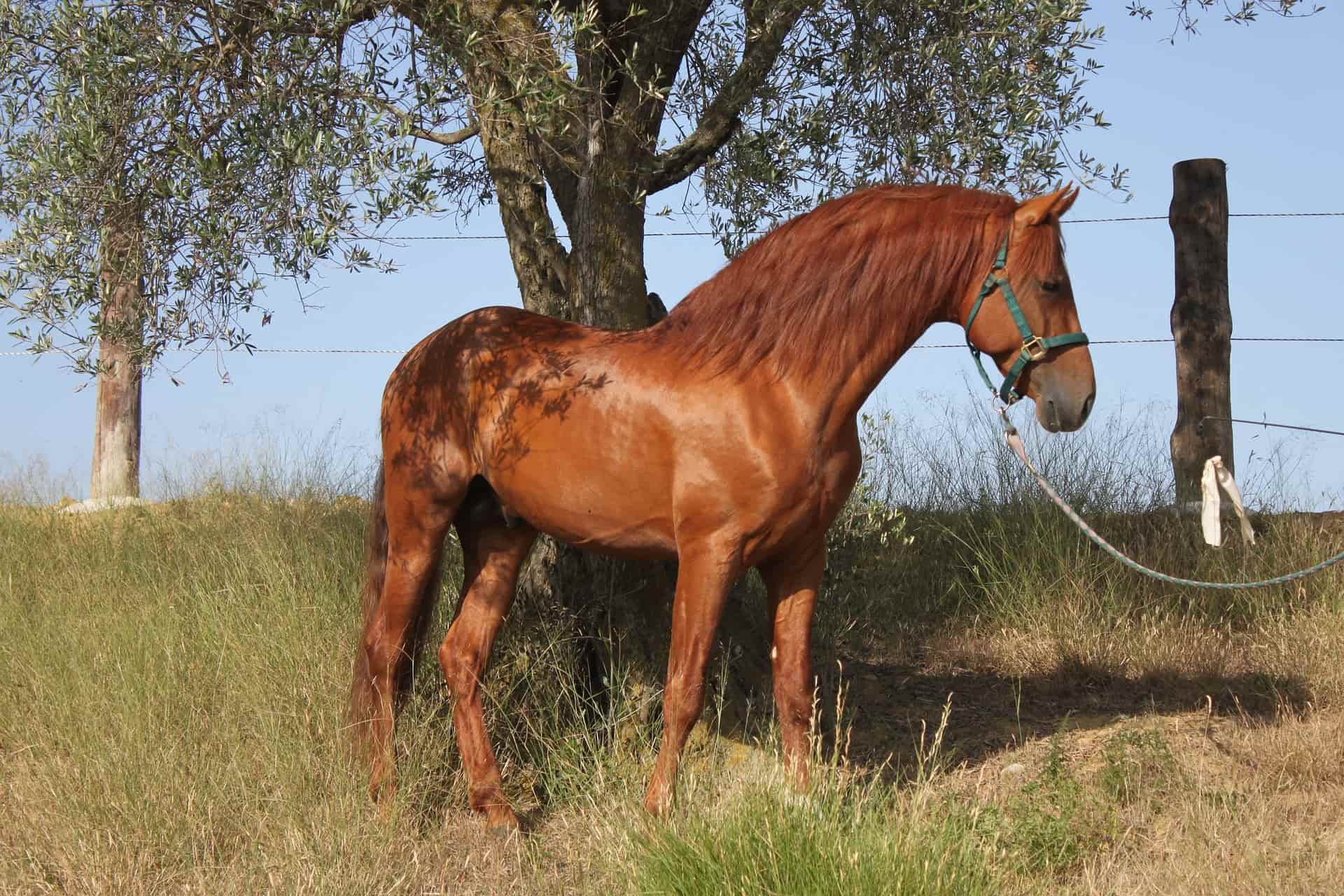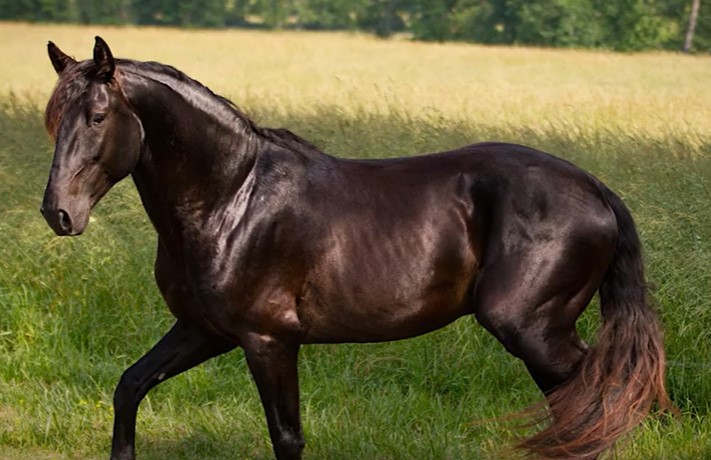The Tennessee Walking Horse is a breed that hails from middle Tennessee where it was originally bred to work in Southern plantations.
Popularly referred to as the Tennessee Walker, it’s a tall horse that can reach up to 62 inches in size. It’s also a heavy-weighted horse, weighing anything between 900 and 1,200 pounds. Appearance aside, this breed is more popularly known for its flashy and animated gaits, especially its running walk.
If you’re interested in this breed, it’s wise to learn as much as you can about it. To make things easy, here are 15 interesting facts about the Tennessee Walking Horse.
Tennessee Walker Facts
1. They are naturally gaited horses
The Tennessee Walking Horse is gaited, and this means its movements aren’t the typical walk, gallop and trot.
*Read our article about what a gaited horse is to learn more
Rather, this breed is known for three unique gaits, that is, canter, flat and running walks.
On rare occasions, the Tennessee Walker also performs the stepping pace, standard trot, fox trot, and single-foot running walk.
In the flat foot walk, the horse’s hooves hit the surface separately but at fixed intervals. You will notice this horse performing a flat walk because it will overreach. This enables it to cover a distance of up to 8 miles in an hour.
Canter is a gait that contains three beats. In this case, one of the horse’s legs takes the lead. This leading leg stretches out further than the rest. For instance, if it’s on the left lead, its front left leg strikes the ground faster than the right.
Few Tennessee Walking horses perform the stepping pace gait. In this instance, the rear foot hits the ground just seconds before the forefoot of the same side. This four-beat is not uniformly paced as there’s usually a longer interval between the second and third beats.
Meanwhile, a trotting horse performs a diagonal stride that has two beats. A fox trot is fairly similar to this with the only difference being that it has four beats.
Tennessee Walking Horses are also known for the running walk, and this brings me to my next point.
2. Tennessee Walkers were born to run
The running walk gait sets the Tennessee Walker not only from other horse breeds but also gaited breeds.
It differs from the flat walk and other gaits in that the hind hoof hits the ground minutes before the fore hoof that’s on the same side.
It will seem like the horse’s rear feet overstep the hoofprints of the front feet by about 6 to 18 inches. More importantly, this four-beat gait is evenly paced with equal intervals between the beats.
When you observe it for the first time, you’ll probably find it odd or even assume it to be artificial.
And while the overplayed high steps in a performance horse show arena are facilitated by weights, this running walk is completely natural.
In running walk, a horse moves at an average speed of 10 to 20 miles per hour. This makes it faster than the flat foot walk that averages just 8 miles per hour.
3. It’s Tennessee’s State Horse
Given the name, it’s not surprising to learn that this gaited horse is the official state horse of Tennessee. It gained this recognition back in 2000.
To add to this, Shelbyville, Tennessee hosts the Tennessee Walking Horse National Celebration regulated by the Walking Horse Owners Association (WHOA).
Introduced in 1939, it’s ranked as one of the biggest Tennessee Walking Horse shows. It’s held annually and lasts a whopping 10 days.
4. One of the most influential sires failed at horse racing
The foundation sire of the Tennessee Walker was a beautiful black breed called Black Allan or Allan F-1. Allan’s owner initially bred the horse for harness racing but things didn’t work out.
Allan preferred to pace instead of race – a trait that made it ill-fitted for the sport. Due to this, this F-1 changed hands quite a few times before being purchased by an individual known as James R. Brantley. Brantley soon realized Allan’s potential.
Specifically, he noticed that the horse produced very quality foals. The resulting offspring had a naturally smooth riding gait, which made for very comfortable rides. One particular offspring that stood out from the rest was Roan Allen.
Unlike its siblings that could perform just a few gaits, Roan Allen could perform up to 7 gaits upon being instructed. Given its capability, Roan was used to produce other horses. It’s considered the foundation stallion of the current Tennessee Walkers.
5. Multiple breeds were used to develop Tennessee Walking Horses
Like other horses, there are several breeds that played a role in the development of the Tennessee Walkers. The modern Tennessee Walking Horse mainly owes its heritage to the Tennessee Pacers.
To be a little more specific, the Tennessee Walker originated from crossing the Canadian Pacer and Narragansett Pacer. Fun fact: the Narragansett Pacer is alleged to be the first breed ever developed in the U.S. Unfortunately, it’s now extinct.
Suggested Read: 9 Stunning Mixed Breed Horses
The Tennessee Pacers were later crossbred with other breeds such as Morgans, Thoroughbreds, Standardbreds and Spotted Saddle seat horses. This crossing created smooth-gaited horses that served as the foundation of the Tennessee Walking Horse.
On the same note, the Tennessee Walking Horse was used to develop other breeds. For instance, it was crossed with Welsh Ponies around the 20th century. This cross created the American Walking Pony – a popular gaited pony breed.
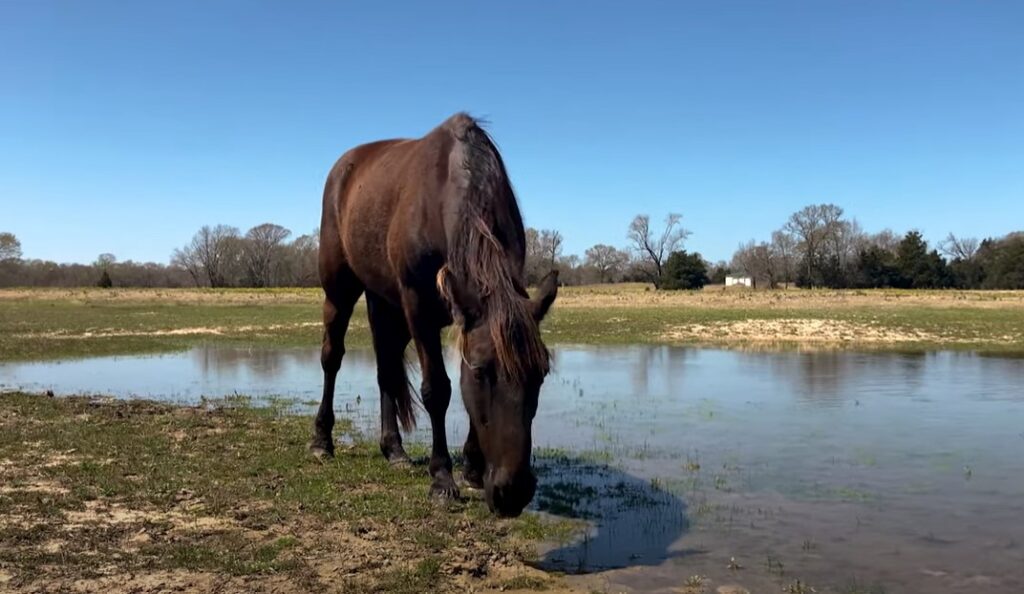
6. Several Tennessee Walkers were famous world-wide
A couple of horses belonging to this breed have made appearances in movies. The two most famous Tennessee Walking Horses were known as Trigger and Silver.
Trigger was the prominent Roy Roger’s horse featured in American Western films. After a while. Roger needed to replace Trigger, which he did with a Tenneessee Walker called Gold Zephyr.
The palomino horse was able to master tricks pretty fast; hence, was featured in multiple films alongside its horse owner.
Tennessee Walking Horses have continued to gain prominence over the years. Their smooth gaits make them incredibly comfortable to ride even for novice riders.
7. The Tennessee Walking Horse was initially bred as a utility horse
It’s no secret that the Tennessee Walker is a successful show horse.
However, it was originally bred as a utility horse. Ranchers and plantation owners were looking for a horse that would provide a comfy ride on the rocky Tennessee terrain, and the Tennessee Walker turned out to be the perfect breed for this.
In addition to being an indispensable working horse for ranch owners, the Tennessee Walking Horse served as a means of transport for traveling preachers and doctors.
8. Tennessee Walkers are healthy and sound horses
Like many other horse breeds, the Tennessee Walking Horse is susceptible to several diseases. These include Navicular disease, laminitis, back pain and several hoof problems.
However, it’s crucial to note that these issues are very rare among those used solely as pleasure hoses.
This is because the majority of trainers use padded shoes that minimize the risk of such issues. Overall, the Tennessee Walking Horse is a healthy breed.
9. Tennessee Walking Horses participate in numerous show competitions
There are two main classifications of show competitions: performance and flat-shod.
A performance horse is one that’s trained to perform in a show ring with the help of action devices. This practice that’s known as soring, involves adding built-up pads or other weighted gadgets to their feet. Meanwhile, the jockey wears typical saddle seat attire.
The idea behind adding weights is to motivate the horse to raise its feet higher in an exaggerated pattern once inside the show ring.
But for a long time now, this practice has been condemned, particularly by organizations like the United States Equestrian Federation. This is because adding extra weight on the horse’s feet exerts a lot of stress on the soft tissues; posing a health risk.
Flat shod horses compete without using any additional devices. If you’ve ever observed a flat shod horse performing, then you probably noticed that its movement style was very natural; not as exaggerated as with performance horses.
10. There are organizations that promote flat-shod horses
In a bid to protect this horse breed from inhumane practices like soring, several organizations were established to protect flat-shod varieties.
The two most prominent ones are The National Walking Horse Association (NWHA) and The Friends of Sound Horses (FOSH).
The NWHA sanctions horse shows and promotes only naturally gaited horses. Unfortunately, it’s gotten into a bit of a feud with the Tennessee Walking Horse Breeders & Exhibitors Association (TWHBEA).
This stemmed from NWHA’s plan to create its very own tracking registry. The Breeders & Exhibitors Association even won a few concessions, especially when it came to the use of the copyrighted registry documents.
Meanwhile, the Friends of Sound Horses (FOSH) was also founded with the goal of promoting flat-shod horses. It’s tasked with licensing judges both for gaited dressage and pleasure riding.
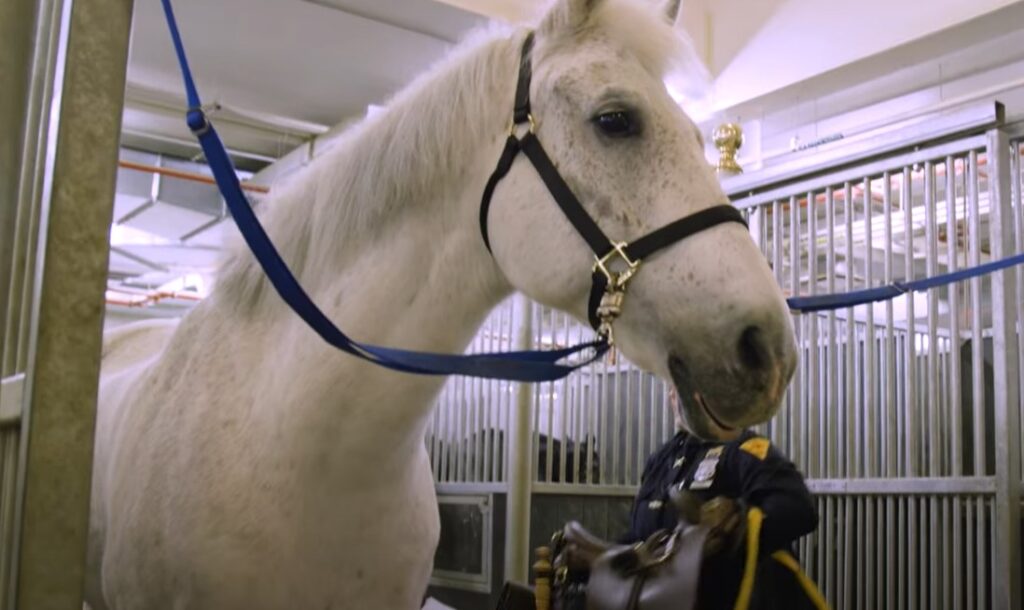
11. The Tennessee Walking Horse stud book was once closed in 1947
When The Tennessee Walking Horse Breeders Association was formed in 1935, one of its objectives at the time was to create a studbook. This made it easier to set the breed’s standards.
Unfortunately, the studbook was shut down in 1947 and wasn’t allowed to register any new horses.
This then means that every Tennessee Walking Horse has to have both of its parents registered in the core registry. For this reason, any foal whose parents’ lineage isn’t known can’t be acknowledged or registered as a purebred Tennessee Walking Horse.
The closure of the studbook affected the breed’s popularity for a short while. In fact, it’s not until the United States Department of Agriculture recognized it as a distinct breed in 1950 that it started regaining its fame.
12. Tennessee Walkers are contentious
Although several bodies have been created to protect it, the Tennessee Walker remains a controversial breed.
One thing that’s sparked a lot of controversy is the Horse Protection Act that was implemented back in 1970. This law declared it illegal for sored horses to be sold, displayed, exhibited or even transported.
It attracted supporters and critics in equal measure. The proponents felt like the policy didn’t do enough to protect these horses.
On the other hand, opponents felt like it would have a bigger negative impact on the show industry. Specifically, it would pave way for similar legislative attacks on other breeds used for showing and exhibition.
13. The Tennessee Walking Horse is versatile
Though it was bred as a utility horse, it evolved to a well-rounded animal that excels in multiple areas, especially riding disciplines.
Oftentimes, this breed is used in show events, particularly those performances that involve saddle seat equipment. Examples of other saddle seat breeds are Morgans and Arabians (read some interesting facts about Arabian horses).
In addition to this, the Tennessee Walker makes an exceptional trail, endurance and pleasure riding horse. As a matter of fact, the TWHBEA has an award program for endurance riding that’s carried out in tandem with the American Endurance Ride Conference.
The fact that Tennessee Walkers are intelligent is another thing that works in their favor. Thanks to this, they’re easy to train; making them fit for activities like barrel racing (more barrel racing breeds) and jumping.
14. There’s an organization dedicated to the preservation of the Tennessee Walking horse breed
Back in 2003, six breeders came together and formed the Tennessee Walking Horse Heritage Society. Their primary objective was and still is to protect the original Tennessee Walker bloodlines.
15. Tennessee Walking Horses are warm blooded
This Tennessee Walking Horse breed is warm-blooded, meaning it portrays the best of both worlds. It gets its athleticism from the hot-blooded variants and its calm temperament from the cold-blooded breeds.
This combination of traits explains why it’s such a popular riding horse. Its easy-going temperament makes it fit both for pleasure riding and in the show ring.
The fact that it has a long lifespan is the icing on the cake. Once you adopt the Tennessee Walker, you’re guaranteed of having the same horse for the next three decades or so.
Conclusion
Tennessee Walkers make excellent trail riding and pleasure horses. But the one thing that they’re famous for is their running walk. In this gait, the horse’s rear feet glide forward; hence, overstepping the prints of the front feet by about 6 inches.
But if you’re looking to adopt this breed, you’ll want to learn more about the breed than just its running walk. Some of the most intriguing facts about the Tennessee Walking Horse are that it’s warm-blooded, versatile, healthy and sound.
